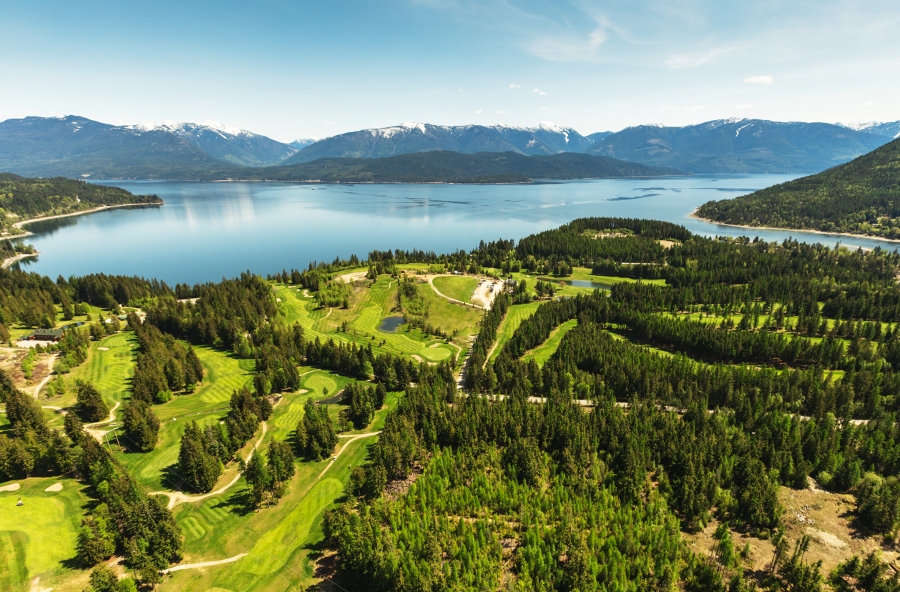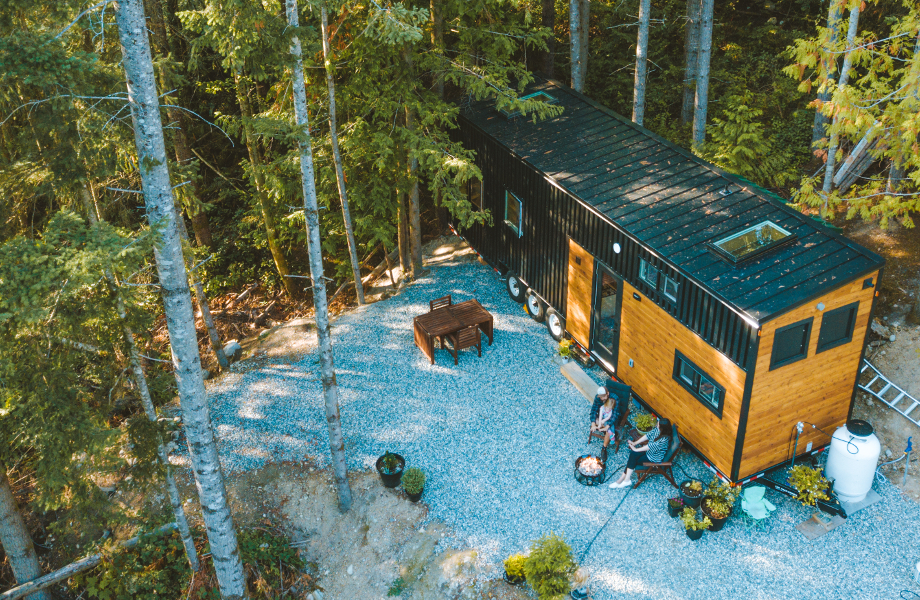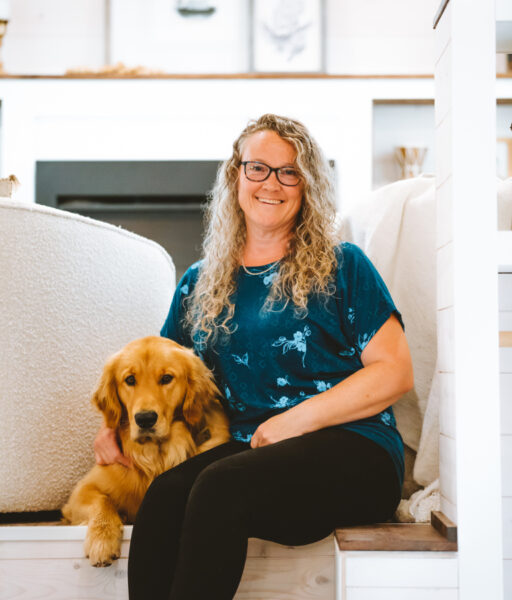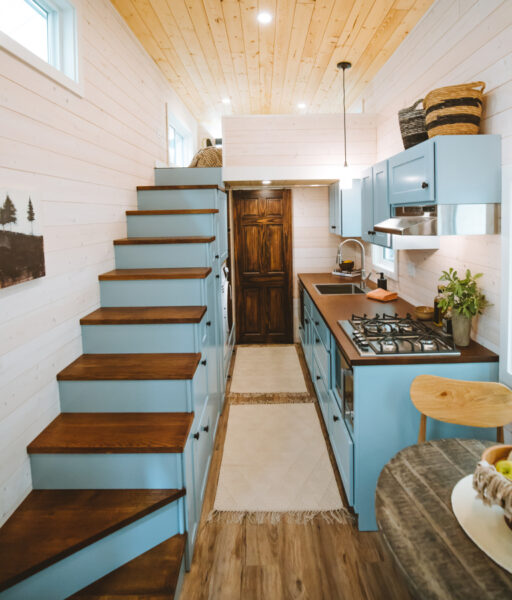For many, a so-called “tiny house” on wheels fits the dream of small-footprint, sustainable and mobile living. The issue in B.C., and many other municipalities, is where to put one.
By Bob Keating
Kailani Sutton had to give up the dining room table, swap her book collection for a Kindle and leave a few of her daughter’s toys behind. She regrets none of it. “We have absolutely everything we need. There’s nothing we really miss,” says Sutton, who, along with her husband and four-year-old daughter, downsized from a condo in Port Moody to a tiny home on the Sunshine Coast. “The biggest factor was financial freedom, but we’re also reducing our environmental impact. We wanted to live smaller and have fewer things.”
The Suttons have embraced the tiny house movement, which has inspired TV shows and new lifestyle movement that’s still spreading slowly in B.C., advocates say, because of a void in regulation.
TINY HOMES DON’T FIT
There’s almost no zoning for tiny homes on wheels in this province–or in Canada. A BC Housing report described a tiny house as, “A permanent, ground-oriented dwelling that is detached, movable and non-motorized. They are 500 square feet or under and tailored to compact design. It is neither a mobile home nor a recreational vehicle (RV). It is a home intended for full-time living.”
National and provincial building codes do not classify this type of dwelling, and most rural and urban municipalities haven’t stepped up, even though tiny-home communities could help create affordable housing options. The classification concerns are varied: from building codes and safety standards to rules for determining minimum square footage, homeownership and tenure models, servicing and depreciation concerns or the effect on neighbourhoods.
In these concerns is a whiff of the stigma that follows mobile-home parks, and the so-called “van life” movement depicted in the Oscar-winning film Nomadland. Such concerns also arose in the 1950s and 60s, when trailers and mobile home parks began to pepper the landscape, yet the same challenges still bedevil the tiny-home sector, and according to its proponents, are choking substantial growth.
A TINY CASE STUDY
The Suttons purchased land on the Sunshine Coast while their tiny home was being built, only to discover they couldn’t legally put it there. They sold the land and temporarily placed their tiny home on a friend’s five-acre parcel, while seeking a permanent location. “There are 3,700 municipalities in Canada,” says Pam Robertson of Sunshine Tiny Homes in Port Mellon, B.C. “Only a handful of them allow for tiny homes.”
Five years ago, when Robertson built her first tiny home (the Minnie Mansion) with her mother, she got hooked. Robertson started the company to build tiny homes commercially and became an advocate for the lifestyle. “When I discovered there was a housing crisis here, my next compulsion was to build a tiny house community.” She encountered the existing regulatory hurdles in most of B.C. “I can think of one municipality in B.C. that has allowed tiny homes: Grand Forks,” Robertson says of the community that passed a backyard home, garden suite and tiny home bylaw in 2019, after floods depleted the housing stock. So far, one tiny home on wheels has been built in Grand Forks.
Most tiny homes in this province operate in tiny shadows, slightly outside zoning and bylaws. That could change. Herman Van Reekum is building Queens Bay Resort, a four-phase housing development in the Kootenays, on the Balfour golf course, with modest lots (around 300 square metres) that are perfect for an RV, modular home or a tiny home. “We are open to designs and ideas. We want a modern look to the place; certainly tiny homes would fit that,” he says. Van Reekum thinks many homeowners will be full-time residents, which could be a conflict for prospective tiny-home residents. “It’s such a shame, and something I’m going to have to explore further,” says Van Reekum.
DON’T ASK, DON’T TELL
As long as there are no complaints, many municipalities and Regional Districts leave tiny-home owners alone, turning a blind eye. “There has not been a lot of progress in B.C.,” says Robertson of Sunshine Tiny Homes. “But at least now there is talk. People know how serious the housing crisis is, and are becoming aware tiny houses are the solution.” Robertson and her company have built a dozen tiny homes while working towards regulatory change.
The BC Tiny House Collective has also been advocating for tiny house regulations in Greater Vancouver for five years. Last fall, city staff were directed to come up with recommendations (still pending) to begin zoning tiny homes, to help create affordable options in one of the most expensive cities in the world.
Meanwhile, the Suttons are hoping some coastal community will soon allow them to live legally in the home they love–tiny as it is. Kailani Sutton says, “[Society] has a skewed perspective of what a house is and how big it needs to be. The idea you must build a bigger house than this is ludicrous, but it’s how it is.” For now.
TINY RESOURCES
In spite of confusing regulations and zoning for tiny homes, there are companies in B.C. that are building, financing and accepting tiny homes in current and future developments. For more resources, see rightsizingmedia.com/resources/tiny-homes.

Communities
buysunshinevalley.com
bigcalm.ca
queensbay.ca
Financing
minttinyhomes.com
Listings
tinyhouselistings.com
Builders
sunshinetinyhomes.com
summittinyhomes.com
rewildhomes.com
hummingbirdmicrohomes.com
nelsontinyhouses.com




